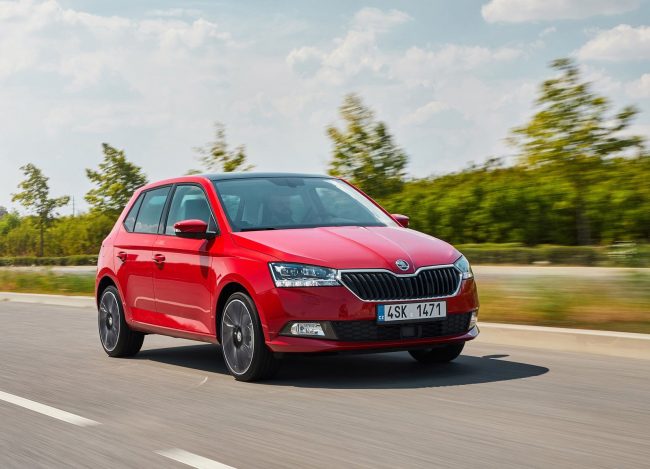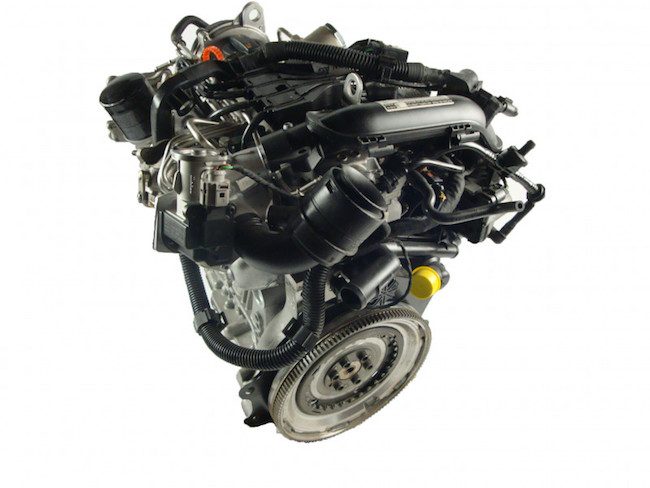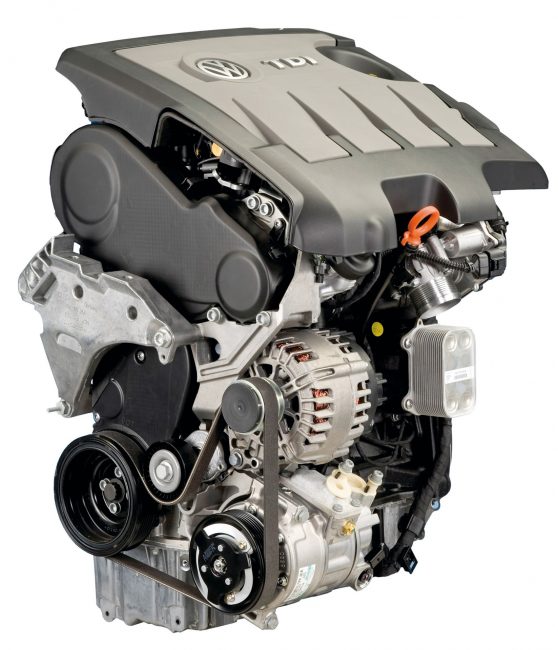
Skoda Fabia engines
Content
Each automaker has a "visiting card" for those who prefer to choose a car based on the "price / quality" ratio. As a rule, these are small or medium-sized cars of a small extra-compact class, with a hatchback body and a small luggage compartment. One of the brightest representatives of the European “kids party” is the Skoda Fabia.

History of creation and production
In 1990, the Skoda Auto concern became the fourth world famous brand - a member of the automotive family of the German auto giant Wolksvagen. At the request of the parent company, the Czechs discontinued the Felicia model in 2001. The new "face" of the company was a model presented in the fall of 1999 at a motor show in Frankfurt, Germany. "Amazing"! That is how, looking back at the Latin word fabulous, its creators called the novelty.
- 1 generation (1999-2007).
The Fabia car of the “first convocation” rolled off the assembly line under the code Mk1. The car, designed on the basis of the German A04 platform, received the name traditional for all Czech-made cars (with the ending "ia"). Engineers were not limited to the release of hatchbacks, and at the auto show in Paris (September 2001) they presented another option to the demanding public - the Fabia Combi station wagon, and in Geneva - a sedan.
Fabia's "relatives" cars are WV Polo and SEAT Ibiza. The designers put a wide variety of engines on them - from gasoline 1,2 liters. AWV to the most powerful 2-liter ASZ, ASY and AZL turbodiesels. The only Czech-made engine in the first generation of Skoda Fabia cars is the 1,4-liter AUB MPI unit, modified since the release of the Favorit and Estelle models, back in the “Donetsk” period of the existence of the Skoda Auto concern.


Watch this video on YouTube
The design team turned out to be very prolific on updates. Following the cars already on the market, there were:
- hatchback Fabia Junior;
- cargo-passenger station wagon Fabia Praktik.
In 2004 and 2006, the car underwent limited restyling. The degree of popularity of the 1st generation car among European consumers is evidenced by the sales figure of 1,8 million units.
- 2 generation (2007-2014).
With the launch of the next generation of cars, the company abandoned the sale of sedans, and focused entirely on perfecting the design of hatchback and station wagon cars. As a result - the appearance in 2009 of cars with a plastic body kit, assembled in the Scoult configuration, from the Czech designer F. Pelikan.


Watch this video on YouTube
A distinctive feature of the machines of the new line is the installation of an "advanced" transmission. Instead of an automatic transmission, the engineers proposed the use of a 7-speed DSG robotic gearbox in a power plant with turbocharged TSI engines.


Watch this video on YouTube
The Czech automaker has also succeeded in another direction. The designers have developed a sports car RS. The engine with a twin turbocharger installed on it developed a power of 180 hp. The maximum speed of the car was up to 225 km / h. In addition to the power plant, it has a number of unique novelties:
- light alloy 17-inch Giugiaro wheels;
- rear bumper with installed dual exhaust and diffuser;
- sports design seats;
- stainless steel pedals.
Until 2, the 2014nd generation Skoda Fabia was assembled by the SKD method at a car factory in Kaluga. And besides - in China, India, Ukraine, and in some other countries. The price of a Russian-assembled car in the basic configuration was 339 thousand rubles.
- 3th generation (2014-present).
The world does not stand still. Unique IT-technologies are rapidly “implanted” into cars. The new Fabia is a MirrorLink space where passengers' smartphones are easily linked to the multimedia audio system and navigation computer. The power plants have also undergone a radical upgrade. To replace the outdated layouts, new ones, created on the basis of the proprietary MQB concept, are engines with variable valve timing systems and fuel injection according to the MPI and TSI schemes, start-stop and a recovery system.


Watch this video on YouTube
The third generation hatchback was introduced in Paris in August 2014. The sporty layout style is called Vision C. It features elegant headlights, a large number of angles, which makes the car look like a crystal shimmering in bright light. Proportionately, the car has become wider and lower than its predecessor.
The cabin now has much more room for the driver and passengers: it has grown by 8 mm in length and 21 mm in width. The 330-liter trunk is 15 liters more spacious than before. The rear seats are equipped with a convenient folding system, on which you can lay a load over one and a half meters long for transportation.
A car worth 11,8 thousand euros (in the basic configuration) is assembled at the Skoda car factory in Mlada Boleslav. Advanced TSI and MPI powerplants are equipped with a manual or preselective robotic gearbox. Deliveries of the car to the Russian Federation are not provided.
Engines for Skoda Fabia
The very first glance at the list of engines that were installed on three generations of medium-sized Czech-German cars causes undisguised surprise. Such a number of units (39) for 20 years have not received cars of one model from any other car company. The Skoda Fabia is aimed at consumers from Eastern Europe. Therefore, Wolcsvagen bosses do not hesitate to use diesel engines with turbines as superchargers in power plants.
| Marking | Type | Volume, cm3 | Maximum power, kW / h.p. |
| AWY, BMD | petrol | 1198 | 40/54 |
| AZQ, BME | –:– | 1198 | 47/64 |
| PLEASE, BBZ | –:– | 1390 | 74/101 |
| BNM | turbocharged diesel | 1422 | 51/70 |
| AAU, BBY, BKY | petrol | 1390 | 55/75 |
| AMF | turbocharged diesel | 1422 | 55/75 |
| ATD, AXR | –:– | 1896 | 74/100 |
| ASZ, BLT | –:– | 1896 | 96/130 |
| ASY | –:– | 1896 | 47/64 |
| AZL, BBX | petrol | 1984 | 85/115 |
| BUD | –:– | 1390 | 59/80 |
| AME, AQW, ATZ | –:– | 1397 | 50/68 |
| BZG | petrol | 1198 | 51/70 |
| CGGB, BXW | –:– | 1390 | 63/86 |
| CFNA, BTS | –:– | 1598 | 77/105 |
| CBZB | turbocharged petrol | 1197 | 77/105 |
| CELLAR | petrol | 1390 | 132/180 |
| BBM, CHFA | –:– | 1198 | 44/60 |
| BZG, CGPA | –:– | 1198 | 51/70 |
| BXW, CGGB | –:– | 1390 | 63/86 |
| BTS | –:– | 1598 | 77/105 |
| CHTA, BZG, CEVA, CGPA | –:– | 1198 | 51/70 |
| CFWA | turbocharged diesel | 1199 | 55/75 |
| CBZA | turbocharged petrol | 1197 | 63/86 |
| CTHE, CAVE | petrol | 1390 | 132/180 |
| CAYC | turbocharged diesel | 1598 | 77/105 |
| CAY | –:– | 1598 | 55/75 |
| CAYB | –:– | 1598 | 66/90 |
| BMS, BNV | –:– | 1422 | 59/80 |
| BTS, CFNA | petrol | 1598 | 77/105 |
| BLS, BSW | turbocharged diesel | 1896 | 77/105 |
| CHZC | gasoline atmospheric and turbocharged | 999 | 81/110 |
| chyb | petrol | 999 | 55/75 |
| CHZB | turbocharged petrol | 999 | 70/95 |
| CJZD | –:– | 1197 | 81/110 |
| CJZC | –:– | 1197 | 66/90 |
| SHUT UP | turbocharged diesel | 1422 | 77/105 |
| CUSB | –:– | 1422 | 66/90 |
| CHYA | petrol | 999 | 44/60 |
Another feature: almost all of these motors were used only in Fabia. Very rarely, the second model for some of them was the universal cargo-passenger van Roomster.
The most popular engine for Skoda Fabia
The most difficult question in terms of the fact that Fabia for two decades withstood over one and a half hundred configurations in different generations. Probably, you should pay attention to the popular CBZB brand motor, which has got into two dozen trim levels. Moreover, the attention is completely different, as for the review, plan. The unit turned out to be not very successful in terms of reliability, the number of “minuses” and the overall rating. Nevertheless, it was installed on second-generation machines for quite a long time.


Watch this video on YouTube
In-line four-cylinder unit with a capacity of 105 hp. with ECU Siemens Simos 10 has a number of features:
- chain timing;
- high pressure direct injection TSI;
- computer ignition and cooling system.
The motor was produced in two versions - as a pure "aspirated" and with an IHI 1634 turbocharger as a supercharger.
Considering that the engineers did not fully think through the concept of “packing” such a number of modern systems into the small size of the unit, it was not possible to avoid shortcomings in the work. These include problems with chain jumping in the timing mechanism, strong vibration at idle, and insufficient warm-up to cold. The latter fact is directly related to the designers' mistakes in linking the direct injection system to the general concept of engine operation.
Like most other German engines, the CBZB unit is demanding on the quality of the fuel and oil being poured. Due to non-observance of the basic rules for operating the engine, its resource, originally declared by the manufacturer at the level of 250 thousand km, turned out to be much lower.


Ideal engine for Skoda Fabia
At the very beginning of 2012, in honor of the 110th anniversary of the first participation of the Skoda car in sports rallies, a new Fabia Monte Carlo was rolled out. The basis of the power plant was a unique 1,6-liter turbocharged diesel engine of the German concern VAG with a capacity of 105 hp. The CAYC marked engine is part of the EA189 series. It is designed to replace a two-liter diesel engine. To reduce the working volume to 1,6 liters. engineers reduced the diameter of the cylinders (from 81 to 79,5 mm) and the amount of piston free play.


Watch this video on YouTube
The engine with an engine displacement of 1598 cm3 is equipped with Continental's traditional Common Rail direct fuel injection system for diesel engines and a Siemens Simos PCR 2.1 electronic control unit. The list of advanced technologies used in the design of the unit is truly impressive:
- high pressure fuel pump with dual plunger pairs;
- nozzles with a piezoelectric actuator;
- accumulator (ramp) and high pressure sensor;
- high pressure fuel pump;
- timing belt drive and oil pump;
- variable geometry turbocharger Garrett GTC1244MVZ;
- dual mass flywheel;
- plastic intake manifold.
Each cylinder has two valves for intake and exhaust. Camshaft drive from the crankshaft - using a toothed belt. The shapes of the inlet (oval) and outlet (spiral) channels help to improve the process of fuel mixture formation. The maximum pressure of the fuel supplied to the system is 1600 bar. The movement of the valves is carried out using roller rocker arms. To adjust the thermal gap, hydraulic compensators are installed on the valves.


Fuel consumption figures for cars like Fabia, Golf and Ibiza command respect:
- in the garden - 5,7 liters;
- outside the city - 3,9 liters;
- combined - 4,5 liters.
Particular attention during the operation of an engine designed to European environmental standards Euro 5 (maximum emissions - 109 g / km) should be paid to the exhaust gas recirculation valve after 150-200 thousand km. run. Regeneration during the operation of the particulate filter stops if the potentiometer G212 fails (error code 7343). The cause of the failure is the wear of the damper bearing, as a result of which the ECU ceases to “see” its initial position.


Watch this video on YouTube
The engine has an extremely high degree of reliability. Motor builders declared a warranty resource at the level of 250 thousand km. In practice, it exceeds 400 thousand km, and is ideal for medium and small class cars. So, on the Wolksvagen Caddy, the CAYC engine passed 600 thousand km before replacement without expensive repairs.
And one more significant plus of the motor is that it responds well to firmware when tuning. Stage 1 firmware gives power up to 140 hp. and a torque of 300 Nm. More serious work with the "guts" (additional filter, downpipe) gives a dozen more "horses" and plus 30 Nm of torque. It is possible to replace the turbine with a more powerful one, but this is impractical in cars like Skoda Fabia.

